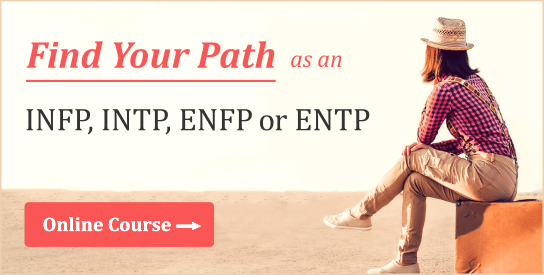
Especially around the holidays, many of us feel stressed and frazzled, perhaps believing there aren’t enough hours in the day to get everything done. At other times, we experience the opposite problem. Instead of being anxious or over-stressed, we seem to not have enough stress in our lives, making it feel rather humdrum and uninteresting. Regardless of whether we’ve veered toward over or under-stimulation, we sense that we’re not living optimally, and this prompts us to find ways of getting back on track. The “track” that we’re seeking is our center, the sweet spot between anxiety and boredom where we feel happy and in our element.
Individuals with an “even-keeled” temperament may have a relatively easy time finding and keeping their center, even during times of stress. By contrast, those with more volatile moods or emotions (i.e., high in Big Five Neuroticism) may struggle to stay centered for more than a day or so before things start unraveling. Maintaining their center can feel like a psychological high-wire act, as even the smallest perturbations can knock them off balance.
Centering is clearly important to human health and well-being. But many people fail to realize that there are different types of centeredness and, hence, multiple ways of centering ourselves. In this post, I want to highlight what I consider to be some of our key “centers” as well as some strategies for moving toward them.
Finding Your “Values Center”
When feeling stressed or aimless, it often helps to set aside time to reflect on our values. This serves to remind us, or draw our attention to, what’s really important to us. Values are like power packs, dense with energy and meaning. So by engaging with our values, we tap into a deep source of life and vitality.
Values also inform our direction and priorities. If we know what matters most to us, it’s easier to take decisive action and let go of trivial concerns. Instead of being stretched and pulled in a million directions, we can narrow our scope and attend to what we really care about. Even when there’s a lot to do, knowing we’ve established value-based priorities can help us feel calm and reassured.
I often use journaling as a means of connecting with my values. It’s a good way of clearing out all the garbage that’s prohibiting access to the parts of myself that can bring renewal and restoration. Only after mowing down these psychological weeds can I better see what’s happening with me and what my next step should be.
At times, connecting with our “values center” entails revisiting our core values—long-held values which comprise a central part of our identity. When feeling lost, this can remind us of who we are and where we belong. On other occasions, we might opt to focus on salient values that are emerging from our current life circumstances and begging for our attention. In either case, reflecting on our values is a reliable means of re-centering and living with greater clarity and direction.
Finding Your “Strengths Center”
As we’ve seen, examining our values can take us a long way toward centeredness by reminding us of what’s truly important. But there are certain things our values can’t do for us, such as evaluating our personal strengths and aptitudes. Many people love music, for example, but not everyone is a great musician. So even if music is one of our core values or interests, striving to be a famous musician without sufficient natural talent is apt to bring frustration and disappointment.
According to psychologist Mihaly Csikszentmihalyi, one factor in achieving a flow state is congruence between personal skill and the level of difficulty of an activity. If the activity proves too difficult, exceeding our level of skill or ability, we’re less likely to get absorbed and “lose track of time”—hallmarks of a meaningful flow state. The same holds for activities that are too easy; they leave us feeling bored and that time is “dragging.”
While there are numerous ways of identifying our personal strengths, knowing and understanding our personality type is a good place to start. Learning about our type’s dominant function, in particular, can tell us a lot about where we might naturally excel. It can also give us insight into our weaknesses and how we might handle disparities between our strengths and values.
For example, a dominant Thinker (T) may be passionate about music, but lack the natural rhythm required to be a good performer. While she may initially find this disheartening, there are other ways of working with music apart from performance. Hence, she might explore the technical aspects of music or acoustics, learn to design or repair musical instruments, become a music historian, etc. All of these allow for a more technical or analytic (T) approach conducive to her strengths as a Thinker.
When engaging our strengths, we naturally feel engaged and the work feels effortless (another hallmark of flow). We experience a steady and sustainable stream of energy, making us less prone to burn-out and fatigue. Identifying and living out our strengths is thus a critical part of finding and maintaining our center.
Finding Your “Being Center”
Understanding our values and strengths gives us insight into how we might authentically and effectively act in the world. But there’s more to human life than just action. We also need to know how “to be”—how to optimize our state of being irrespective of what we’re doing, thinking, or feeling. Our state of being is arguably the deepest and most foundational part of who we are, what some might call our “spiritual center.”
According to many religious traditions and philosophies, the best way to inventory our state of being is in stillness and meditation, when we’re not engrossed in “doing.” Since most Westerners, in particular, have been conditioned to “do” rather than just “be,” partaking in a period of silence can initially feel strange and uncomfortable. Not only can the silence itself feel eerie, but we quickly discover just how anxious and unwieldy our minds are, and that attempting to quiet them is like taming a wild horse.
The mind isn’t completely to blame, however. Equally complicit is its partner in crime—the body. If the body is tense and anxious, the mind tends to follow suit (and vice-versa). Likewise, if the body is relaxed or inactive for too long, the mind can become bored or restless. In most cases, however, our chief problem is failing to effectively relax our minds and bodies. We equate relaxation with plopping ourselves down in front of the television for a couple hours. Hence, we fail to discover the benefits of more active forms of relaxation (e.g., yoga, meditation, bodywork, etc.) which help us explore and regulate our “being center,” while also showing us the way to a more pleasurable bodily life.
Have you ever had a massage and found yourself breathing differently—more deeply and effortlessly—afterward. The same thing can happen after a hard cry, Yoga session, sexual climax, or a series of “belly” laughs. A remarkable shift occurs in our bodies that allows us to experience a new way of breathing and being. It’s as though we’ve shed our anxiety and psychophysical baggage, leaving us feeling lighter, freer, and more alive.
This vibrant and more relaxed mind-body state is the being center we want to stay connected to. Not only do we feel less anxious and more alive, but it also allows us to act more virtuously because we’re less gripped by anxiety, impatience, impulsivity, etc. It’s amazing the extent to which our “spiritual” state is connected to what’s happening in the body, which is why mind-body practices and therapies are so beneficial.
Closing Remarks
Surely there are additional “centers” that could have been addressed in this post. But one of the main things I wanted to underscore was the importance of thinking about centering in multiple respects. And only by attending to all of them can we be our best selves.
The ultimate magic trick involves learning to stay simultaneously connected to all of our centers. But this is no small task. In many cases, we focus on one aspect of centering to the detriment of the others. In attempting to discover or reconnect with our passion, for instance, we might end up neglecting our state of being. So even if this moves us closer to our values center, we become more estranged from our being center; we focus too much on the imagined goal and lose sight of what’s happening with our inner state along the way. The opposite can also happen. We focus on getting our inner house in order, but find it increasingly difficult to attend to the responsibilities of daily life.
Despite these challenges, progress occurs by continuing to address each of our centers individually, as well as learning to effectively integrate them. While all represent forms of wisdom, the integrative element is the highest and most difficult to achieve. But with time and continued investment, we can become more integrated even as we explore and develop new parts of ourselves.
To better understand your personality, values, and path to personal growth and effectiveness, be sure to explore our online course, Finding Your Path as an INFP, INTP, ENFP or ENTP.
Related Posts:
5 Personality Traits of Passionate People
INTP & INFP Identity-Seekers & Creatives
The “Flow” Experience: The Art & Benefits of “Losing Yourself”

Brianna says
This post was as much enlightening as it was interesting to me. Thank you!
A.J. Drenth says
Thanks so much Brianna! It’s great to hear you enjoyed the post.
Dan says
I am an INTP and have spent 28 years (still “going”) in a clear and absolute wrong and soulfully destructive career and wandered so far away from my “center” that it’s embarrassing to even disclose this in print. But this post (and others) takes the edge off the pain for a bit and inspires me toward strategies to cope. Thank you so much. Sincerely.
A.J. Drenth says
Thank you Dan for sharing your struggles as an INTP. I’m glad the post gave you some hope and inspiration.
Julian says
Fantastic post; thank you. I’d be interested in reading more about the “highest and most difficult to achieve” state of integrated centers, especially with respect to personality types.
A.J. Drenth says
Thanks so much Julian. We’ll keep your suggestion in mind going forward.